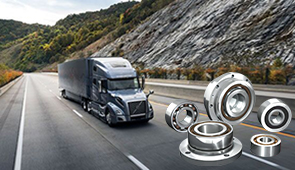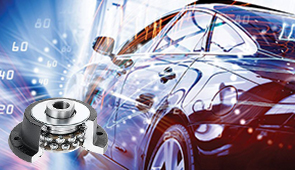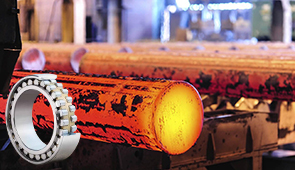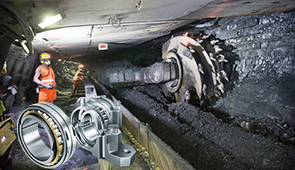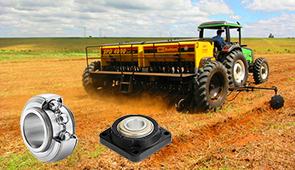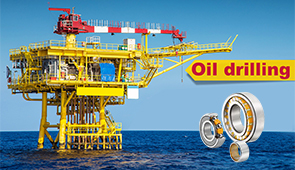Ultimate Guide to Slewing Ring Bearings: Selection, Applications, and Maintenance
Slewing ring bearings are critical components in a wide range of heavy-duty applications, from construction equipment and wind turbines to robotics and industrial machinery. Their unique design enables smooth rotational movement while supporting significant axial, radial, and tilting moment loads, making them indispensable for complex mechanical systems. However, selecting the right slewing ring bearing, understanding its applications, and maintaining it properly can be challenging without the correct guidance. This comprehensive guide is designed to demystify slewing ring bearings, equipping you with the insights needed to make informed decisions, optimize system performance, and extend the lifespan of these essential parts. Whether you’re an engineer, a maintenance professional, or a technician looking to deepen your expertise, you’ll find practical advice and technical details throughout this article to meet your needs.
What Are Slewing Ring Bearings and How Do They Work?
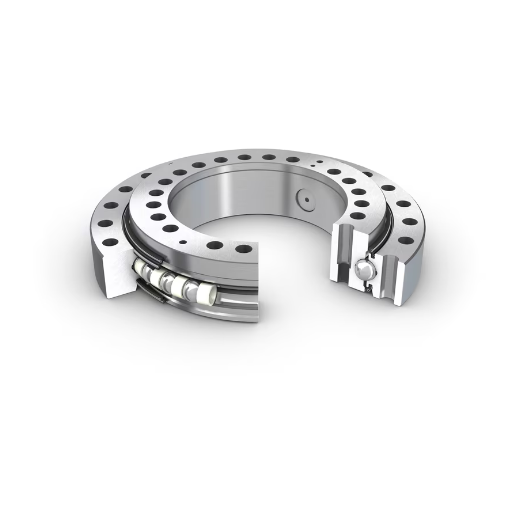
Understanding the Structure and Function of Slewing Bearings
Slewing ring bearings are uniquely adept at supporting axial, radial, and tilt moment loads in a constricted space, since they are capable of multitasking. Slewing bearings consist of two parts: inner and outer rings and rolling elements of either balls or cylindrical rollers, which are placed between the rings. These rolling elements reduce friction and allow rotating movement along with significant loads. Other than that, slewing bearings have additional features like internal or external gear teeth, which allow for a pinion gear to directly attach to the driving mechanism.
Depending on the specific application, slewing bearings are manufactured for various configurations such as single-row, double-row ball and cross roller. Cross type slewing bearings are the best for applications that require precision because the arrangement of the rollers at right angles provide high rigidity and deformation.
The latest techniques in modern slewing bearings strive to improve performance and durability through the incorporation of advanced materials, along with modern sealing techniques. High-strength alloy steel is used because of its capability to bear great stress and resist fatigue over a long period. Seals are also critical because they prevent the bearing system contamination from dirt, debris, and moisture, which causes accelerated wear, mechanical failure, or destruction.
Modern structural innovations and material engineering allow slewing ring gears to perform in reliable, demanding applications like wind turbines, construction cranes, medical imaging devices, industrial robotics, and more. For proper functionality, the bearing must be conveniently and precisely installed in a way that guarantees it fulfills the specifications and operates optimally for the entirety of its design lifespan.
Different Types of Slewing Rings: Ball vs. Roller Configurations
Slewing rings are critical parts of radial systems with slewing functions; like most parts that integrate rotation and linear motion, the configuration of a slewing ring significantly affects the performance, efficiency, and even the load-bearing capacity of the device. Ball slewing rings are slewing rings that feature spherical rolling elements. Ball slewing rings tend to perform well in a wide range of applications where two orthogonal rotations are required, including cases where the thrust, bending, and tilting moments are relayed. Their small size and ability to be integrated into low-profile systems make them especially suited for radar units, turntables, and cranes.
In contrast, roller slewing rings use cylindrical rollers, which increase the contact area and allow loads to be distributed more uniformly. This allows them to perform better under high levels of radial and axial forces as well as significant tilting forces in the above-mentioned places; thus, they are well suited for construction equipment, heavy-duty mining machinery, and offshore platforms. Deployment of roller configuration increases the bearing’s strength and service life, which makes this slewing ring preferable under severe operating conditions that require high forces and loads.
It is important to note the difference between ball and roller slewing rings to make an informed decision based on the type of load, working conditions, and expected lifespan of the device.
How Slewing Ring Bearings Accommodate Heavy Loads and Rotation
Through intricate material design capable of sustaining extreme forces, slewing ring bearings allow for the execution of heavy tasks requiring turning movement. Designed to fulfill simultaneous rotary, radial, and axial requirements, these bearings are manufactured with utmost precision to guarantee maximum leveraging efficiency. Construction is done using bushing-type races for roller or ball elements with strong enclosing seals against contaminants, to slewing ring bearings that provide deep grooves, which guarantee steady operation during demanding conditions.
Modern bearing structures are slewed with top-grade alloys for steel and advanced tech heat treatment to increase shed loads and prolong endurance. As an illustration, roller slewing bearings apply to ribs or among tapered rolling elements, which enhance bespeak contact for higher rigidity and lessen disproportionate changes in the shape of the part due to harsh loads. Furthermore, the application of new techniques makes it possible to lubricate to a higher standard, enabling rotation and extension of further life service. In areas with strong impact, such as offshore energy production and drilling, specific exposure makes these coatings needed to prevent core rust and further assist enhanced resistance to both corrosion and fatigue.
To enable rotational movements, bearings have clearance and preload control adjustments that allow motion dynamics to be carefully managed. Slewing rings with integrated drive mechanisms or gear teeth provide reliable torque transfer for high-speed or constant rotation applications. The collaboration of these design elements allows for consistent, reliable performance over long operational cycles, meeting the needs of construction, mining, and renewable energy industries.
What Are the Main Applications for Slewing Ring Bearings?

Crane and Heavy-Duty Equipment Applications
Slewing ring bearings are particularly important to the operation of cranes and other heavy machinery because they can support significant axial, radial, and moment loads while permitting easy rotation. For example, the upper part of hydraulic cranes can be rotated to posison loads during lifting. Slewing rings with a specifcially tailored configuration can be designed to have single-row, double-row, or even triple-row bearings, and this will increase their capacity to bear loads.
Components used in heavy-duty machinery are often designed to endure harsh working conditions and extreme environments. Slewing rings must possess great longevity. The service life of slewing rings is increased by using heat-treated raceways, protective coatings that prevent rust, and perfect seals that block the entry of dust, water, or dirt. These factors ensure optimized servicing and maintenance.
The performance of slewing rings in heavy equipment is enhanced further by new material technologies and strict manufacturing tolerances. For instance, modern steel alloys and custom machining enable greater geometric alignments, which lower operational friction and increase efficiency. The inclusion of condition-monitoring sensors in some modern slewing ring systems provides real-time bearing performance data, which aids in predictive maintenance and minimizes system downtimes. These features render slewing rings crucial for varying industries that demand dependable and resilient rotational systems for heavy-duty work.
Turntable Bearing Applications in Various Industries
Turntable bearings, or slewing ring bearings, are critical in many industries because of their capability to accommodate axial, radial, and moment loads at the same time. Combines precise rotational movement under heavy loads with slewing (turning) motion. They are key components in heavy machinery, robotics, and renewable energy systems.
- Construction and Earthmoving Equipment: Turntable bearings are part of excavators, cranes and concrete pumps. These reproduce the relative vertical motion of different parts of the machines and enable the pivoting of components with respect to the base. Their robust construction helps endure extreme conditions in demanding construction environments.
- Wind Energy: Within wind turbines, turntable bearings are critical in yaw and pitch systems. They allow important off-axis turning to be done accurately to improve turbine orientation in the wind for increased efficiency and mechanical durability.
- Medical Equipment: High-precision diagnostic imaging systems like CT scanners use turntable bearings in conjunction with multi-axis systems to allow for smooth and accurate rotational patient positioning. Their failure can compromise patient safety and equipment performance.
- Industrial Automation: Slewing bearings support the movement of robotic platforms and automated production lines, specifically in the automotive and aerospace industries. Deploying robotics enables a higher degree of accuracy and improved productivity.
- Marine and Offshore Applications: Turntable bearings have important functions in cranes aboard ships, radar setups, and on oil drilling platforms. Their performance in harsh corrosive conditions specific to offshore environments under heightened stress is critical for these applications.
The operational life and functionality of turntable bearings is continuously improved by new developments in material technologies, manufacturing processes, lubrication systems, and even bearing self-monitoring capabilities. The integration of sensor technologies allows for the monitoring of wear and performance in real time, enabling maintenance to be completed on an as-needed basis, thus minimizing idle time. These advancements guarantee that modern industries will continue to rely on turntable bearings.
How to Select the Right Slewing Bearing for Your Application?

Understanding Load Requirements: Axial, Radial, and Moment Loads
It is crucial to understand the primary types of loads a slewing bearing can handle while choosing one for a specific application. To withstand use in a variety of situations, these devices are configured to manage a combination of the three principal types simultaneously, including:
- Axial Loads: These types of loads strike the bearing’s side and either compress or stretch it along the rotational axis, which is why forces such as crane slewing or vertical wind turbines, placing vertical rotational forces on the bearing, are considered. They do tremendous amounts of up or downward pressure on the bearing. Because such forces may consume the working life of the bearing, proper calculation of the capacity is vital. Deformation is bound to occur otherwise due to extreme compression of the bearing, resulting in reduced functional lifespan.
- Radial Loads: This type of load hits the centerline at a right angle and lies in the predetermined circumference of the slewing bearing. As the bearing sits horizontally, rotary machines placed over it, such as conveyor turntables, act as primary examples. Over the proposed radial loads, maintenance of the alignment along the axis already present may cause undue strain over the raceway or rolling elements. To guarantee accuracy, the slewing bearing must be able to handle projected radial loads due to the system in which it is housed.
- Moment Loads: As a result of the force being applied at some measurable distance from the bearing’s center, a torque effect which tends to tilt or pivot the bearing is created. Moment loads are noticeable in cases like excavators, ship deck cranes, or aerial platforms. When trying to evaluate load capacity about moment loads, one must always bear in mind the distribution of the center of gravity and symmetry of the load because their imbalance can result in excessive wear along with additional stress on the mechanism.
Addressing these factors enables reliable performance, optimal system uptime, and increases the overall lifespan of the slewing bearing in engineering applications all at once.
Sizing Considerations: Diameter, Thin Section, and Range of Applications
Optimal performance, structural integrity, and system longevity of slewing bearings critically depend on their proper sizing. In these bearings, matching the diameter to the predetermined load requirements alongside the geometric constraints is vital. Typically, larger diameters tend to have greater load capacities and enable rotation under extreme conditions, whereas compact diameters perform better in applications where low footprint and weight are required.
Thin-section slewing bearings are another advancement that allows expansion in the range of applications. Reduction of shim volume in some cases allows them to fit into places previously thought impossible. Due to advancements in high-strength material alloys and precision machining, these bearings can withstand loading conditions greater than those of standard designs, revolutionizing industries such as robotics, aerospace, and medical equipment.
Slewing bearings have a wide range of uses, from wind turbines and construction cranes to excavation machinery and heavy transportation systems. Functional adaptability to environmental and operational demands is achieved for each use case by selecting the proper combination of materials, size, and configuration. Engineers analyzing these factors, substantiated with extensive simulation and testing, can cross-validate their design hypotheses to enable a refinement process aligned with optimal efficiency and performance.
Standard Slewing vs. Custom Slewing Rings: When to Choose Each
The choice between custom and standard mounted bearings is determined by the customer’s requirements, the schedule for ordering, engineering time, and the budget. The major advantage of standard slewing rings is that they are off-the-shelf products and hence available at short notice, unlike their custom counterpart, which takes a proportionately longer lead time. Custom options follow predetermined industry specifications, and their construction design enables reliable performance across several generic purposes, including cranes, construction machinery, material handling systems, etc. Thus, standard options are preferred in cases where resources such as time and money are limited.
On the other end of the spectrum, custom options need to be designed and manufactured when certain application limits defy the laws of standard designs. These limits can be one or a combination of these ranges: distinguishable load limits, complicated space restrictions for mounting, custom-defined motion precision, and extreme environmental conditions like high temperatures or corrosion. These bespoke requirements are achievable only by strategic design planning, careful material choice, and detailed manufacturing for custom slewing rings. It is important to emphasize that these tailor-made options take longer due to additional engineering, production work, and financing, which are often more costly than traditional stock products.
To make an optimum choice, engineers need to analyze application requirements involving intricate calculations related to axial and radial loads, operational speeds, lifecycle expectations, and more. Different options offer varying benefits. Standard solutions simplify procurement for items intended for general distribution, while custom designs offer unparalleled adaptability and accuracy for advanced or specialized applications. Regardless of the technical considerations, operational and budgetary expenses should be tightly controlled alongside efficiency to maximize system performance and lifespan.
What Are the Differences Between Four-Point Contact Ball Bearings and Other Slewing Bearings?
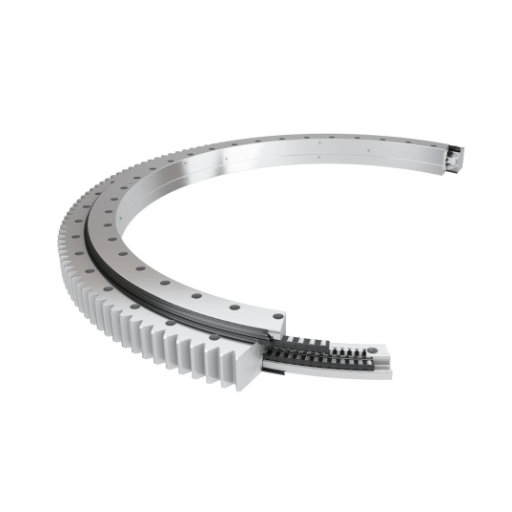
Four-Point Contact Design Advantages and Limitations
Four-point contact ball bearings have unique designs meant for very specific technical needs, and these designs offer certain advantages over other slewing bearing configurations. These bearings are capable of taking on axial, radial, and moment loads at the same time because of a single row of balls in contact with four raceway points. This allows for multi-load accommodation, which helps in minimizing space and weight, reducing the bearing footprint, and making them perfect for systems with fewer components and heavy design efficiency.
Even with the advantages, there are some drawbacks. Four-point contact bearings are less effective at absorbing strong radial loads compared to cross roller bearings and three-row roller designs. Also, the contact points between the parts have higher chances of wearing off under uneven loads or misalignment. Furthermore, bearing too much radial load along with the other must be controlled during production and assembly, which makes them highly sensitive to manufacturing tolerances and precise installations.
Improvements in materials science and lubrication tech have lessened some of these issues by increasing fatigue lifespan and optimizing load distribution. Corrosion resistance alongside wearing capabilities has been improved through new coatings and surface treatments, which is particularly important for advanced construction machinery, wind turbines, and robotics. In the end, four-point contact ball bearings provide handy solutions; however, they must be meticulously tailored with deep engineering calculations to accurately solve their intended problems.
Comparing Ball Diameter and Load Capacity Across Bearing Designs
The ball diameter has a great influence on the load capacity of several bearing types. For instance, having larger ball diameters will increase contact with the raceways and so increases the area available. This improves contact, thereby enhancing load capacity and performance during heavy radial or axial loads. On the other hand, larger ball diameters increase bearing weight and space which can be troublesome in lightweight or compact designs.
For instance, even though higher speed performance is desired in angular contact ball bearings, they are designed using smaller balls to reduce friction forces. Four-point contact bearings, on the other hand, make use of larger balls for applications that combine axial and radial loads.
Selecting ball sizes comes with a unique set of challenges. Larger balls may be capable of handling greater load capacities, but spindle speed may become slower due to increased surface drag and inertia. Bearing designers work around this problem by increasing surface velocity with raceway curvature design, advanced materials, or surface coatings that reduce wear, achieving reliability across numerous operating conditions.
How to Properly Mount and Maintain Slewing Ring Bearings?
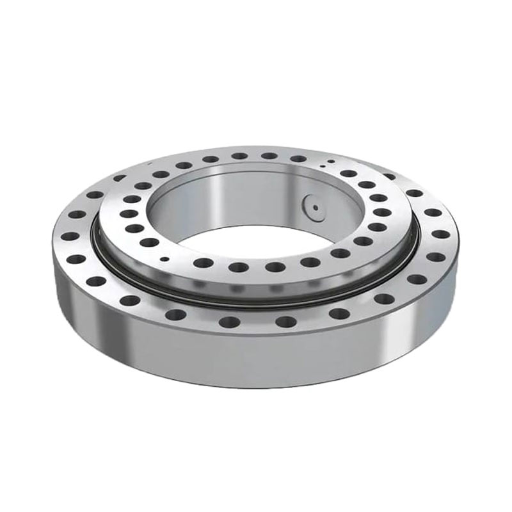
Proper Mounting Techniques for Optimal Performance
The performance and service life of slewing ring bearings critically depend on their proper mounting. As a first step, make certain that the mounting structure is level, consists of a rigid material, and will easily stand up to the loads specified by the bearing. Controlling flatness to within the limits suggested by the manufacturer is necessary to avoid distortion during operation, which would otherwise result in premature wear or failure. A thorough examination of the contact surface is crucial, and it should be free from any contaminants such as dirt, burrs, or unevenly applied coatings which would affect the mounting interface.
All fastening bolts should be tightened in a gradual and controlled manner using a certain combination for diagonal bolts, generally starting with the ‘star’ or ‘cross’ pattern. Doing so will help equalize stress concentration across the bearing. Following the manufacturer’s recommendations with regard to torque is mandatory, observing that too little torque can loosen the connection, while too much torque may damage the bearing or fasteners. Considerable improvement can be gained by using bolts with built-in anti-loosening characteristics, or releasable thread adhesives that withstand high vibrations, to ensure reliability.
While aligning the slewing ring bearing, ensure proper gear meshing and check that all lubrication paths are clear for grease flow during operation. To achieve accurate alignment with minimum axial and radial runout, use calibrated measurement devices, for example, dial gauges and laser alignment systems.
Creating detailed documentation of the mounting process, such as dynamic torque values, static flatness measurements, rotational lubing, and other practices, will be helpful for any future maintenance or troubleshooting. All this information is necessary to ensure the optimal bearing performance while mitigating operational risks and downtime.
Lubrication Requirements for Slewing Bearings
Fulfilling the correct lubrication standards is essential for the performance, efficiency, and longevity of slewing bearings. The bearing lubrication procedure reduces the frictional resistance between two moving components, lessens wear, and helps restrict corrosion. Cautious attention must be paid to factors like load, operating speeds, temperature, and environment while choosing a lubricant. In most cases, the slewing bearings support high loads and intermittent motion; hence, appropriate high-quality greases with suitable viscosity base oil and extreme pressure (EP) additives are recommended.
The lubrication application intervals rely on the bearings’ operational conditions. For example, bearings in harsh environments or with high loads generally require more frequent relubrication intervals as compared to those under moderate workloads. There is usually too much lubrication and little mixture with contaminants like moisture. Most manufacturers provide additional instructions to focus on scheduling, but more frequent inspections should be done to guarantee that the grease is carefully distributed without being contaminated.
The occurrence of over- or under-lube lubrication reduces with automated lubrication systems as they provide specific intervals for introducing precise amounts of lubricants. These systems are advantageous to operators remotely for lubrication monitoring, therefore assisting predictive maintenance
In addition, both excessive lubrication and insufficient lubrication come with risks. Too much grease can result in overheating and damage seals, while not enough lubrication raises the risk of metal to metal contact, resulting in more wear and failure. Analysis of grease properties, such as viscosity and levels of contamination, is crucial to optimize lubrication practices. Diagnosis has become more accessible with the development of tools and sensors that monitor lubricants constantly and provide maintenance data to keep the slewing bearings in their best working condition.
Frequently Asked Questions (FAQs)
Q: What are slewing ring bearings, and how do they work with internal gear systems?
A: Slewing ring bearings are large-diameter bearings designed to handle combined loads (axial, radial, and moment loads simultaneously) while providing rotational movement between two structures. When equipped with an internal gear, these bearings enable precise rotational control through motor-driven pinions that engage with the gear teeth. Series slewing bearings with internal gearing are particularly valuable in applications requiring controlled rotation under heavy loads. The internal gear configuration offers improved stiffness and torque transmission capabilities while maintaining a compact cross-sectional profile, making them ideal for high-load applications like cranes, excavators, and wind turbines where precise positioning is essential.
Q: How do thin-section bearings compare to standard slewing rings?
A: Thin-section bearings represent a specialized category of slewing ring bearings designed for applications where space is limited but precise rotational capability is still needed. Unlike standard slewing rings that prioritize load capacity, thin-section bearings feature a reduced cross-sectional profile, typically maintaining a consistent section thickness regardless of bearing diameter. This gives them versatility in space-constrained applications while still providing excellent rotational accuracy. However, thin-section bearings generally offer lower load capacities than standard slewing rings of comparable diameter. They’re commonly used in medical equipment, semiconductor manufacturing, and aerospace applications requiring lightweight, compact designs with precise rotational control and extended service life.
Q: What factors should be considered when selecting slewing ring bearings for specific applications?
A: When selecting slewing ring bearings, several critical factors must be considered to ensure optimal economy and capacity. First, accurately determine the load profile (axial, radial, and moment loads) and calculate maximum and operational loads. Consider the bearing geometry and mounting configuration (flange type, bolt patterns) to ensure compatibility with your equipment. Operating conditions, including speed, temperature range, and environmental factors (exposure to moisture, dust, chemicals), significantly impact selection. For applications requiring precise positioning, evaluate gear quality, backlash specifications, and rotational accuracy. Finally, maintenance requirements and expected service life should align with your operational plans. Proper selection ensures a single bearing can effectively handle the complex loading scenarios typical in rotating equipment.
Q: How are slewing rings designed to handle high-load applications in construction equipment?
A: Slewing rings are designed for high-load construction applications through several specialized engineering approaches. They typically feature robust roller or ball elements arranged in optimized patterns to distribute loads effectively across the bearing raceway. For excavators, cranes, and similar equipment, manufacturers often employ multi-row configurations that significantly increase load capacity for given space constraints. The bearing raceways are induction-hardened and precision-ground to withstand concentrated stresses. Mounting flanges are engineered with specific bolt patterns and thicknesses to distribute loads into the supporting structures. Additionally, sealing systems are designed to withstand harsh construction environments while preventing contamination entry. This comprehensive design approach ensures reliable performance in the demanding duty cycles typical of construction equipment while providing extended service life.
Q: What maintenance practices ensure extended service life for slewing ring bearings?
A: To ensure extended service life for slewing ring bearings, implement a comprehensive maintenance program starting with regular lubrication using manufacturer-recommended greases at specified intervals. Perform periodic inspection of seals for damage and replace as needed to prevent contamination. Monitor bolt preload/torque values and check for proper bolt tension according to the manufacturer’s schedule. Inspect gear teeth for wear patterns and damage if using geared slewing rings. Track operating temperatures during use, as abnormal increases may indicate potential problems. Document rotation resistance/torque measurements to identify trends that might suggest degradation. In corrosive environments, consider using corrosion-resistant materials or applying protective coatings. Finally, analyze grease samples periodically to detect metal particles that might indicate internal wear. These practices significantly extend bearing life and prevent costly unplanned downtime.
Q: What are the advantages of using a single bearing versus multiple bearing designs in turret applications?
A: In turret applications, using a single slewing ring bearing offers several distinct advantages over multiple bearing designs. First, it significantly simplifies the mounting structure, reducing both design complexity and assembly time. A single bearing provides better load distribution across a larger diameter, increasing moment load capacity while maintaining a more compact vertical profile. This approach reduces stack-up tolerances that can affect accuracy in multiple bearing arrangements. Maintenance is also streamlined, as there’s only one component requiring lubrication and inspection. Additionally, single slewing ring bearings can incorporate integrated gear teeth and mounting points, further simplifying the overall system. For these reasons, slewing ring bearings are designed specifically to handle the complex loading scenarios in turret applications with greater efficiency than multiple conventional bearings would provide.
Q: How do gear options affect the performance and applications of slewing ring bearings?
A: Gear options significantly impact slewing ring bearing performance across a variety of applications. External gears (mounted on the outer diameter) are commonly used where space constraints are minimal, offering easier maintenance access and simplified manufacturing. Internal gears provide better protection from environmental contamination and mechanical damage, making them ideal for harsh environments. Gear precision grades affect positioning accuracy, with higher precision grades essential for applications requiring exact positioning, like medical equipment or semiconductor manufacturing. Tooth profile modifications can optimize noise characteristics, load distribution, and efficiency. The gear material selection impacts wear resistance and strength, with options ranging from standard carbon steels to specialized alloys for extreme environments. These gear characteristics must be carefully matched to application performance requirements to ensure optimal operation throughout the bearing’s service life.
Q: What information is required in a technical drawing when specifying a slewing ring bearing?
A: A comprehensive technical drawing for specifying a slewing ring bearing should include several critical elements. First, detailed mounting dimensions including bolt circle diameters, number and size of bolt holes, and flange thicknesses must be precisely defined. The bearing’s overall dimensions (inner diameter, outer diameter, and height) are essential, along with raceway geometry specifications. For geared slewing rings, the drawing should detail gear specifications including module/pitch, pressure angle, number of teeth, face width, and quality grade. Interface tolerances for mating surfaces must be indicated to ensure proper fit. Load specifications (axial, radial, and moment loads) should be provided along with operating parameters such as rotation speed, duty cycle, and environmental conditions. Finally, material requirements, surface treatments, and any special features like sealing arrangements or lubrication provisions should be specified to ensure the bearing meets all performance requirements for its intended application.
Q: How do environmental factors influence the selection of corrosion-resistant slewing ring bearings?
A: Environmental factors critically influence the selection of corrosion-resistant slewing ring bearings. In marine applications or chemical processing environments, exposure to salt spray, acids, or caustic solutions demands specialized materials like stainless steel or non-metallic components. Temperature extremes affect both material selection and lubrication requirements – high temperatures may necessitate special heat-treated steels while extremely cold environments require materials that maintain ductility without becoming brittle. Humidity levels influence seal design and materials to prevent moisture ingress. For applications exposed to abrasive particulates (mining, cement production), enhanced sealing systems and harder surface treatments may be necessary. UV radiation exposure in outdoor applications can degrade certain seal materials, requiring UV-resistant compounds. These environmental considerations must be carefully evaluated during the selection process to ensure the bearing provides reliable performance and extended service life in its specific operating environment.
UCTH213-40J-300 with Setscrew(inch)
CNSORDERNO: Normal-duty(2)
TOGN: UCTH213-40J-300
SDI: B-R1/8
SD: 2 1/2
UCTH212-39J-300 with Setscrew(inch)
CNSORDERNO: Normal-duty(2)
TOGN: UCTH212-39J-300
SDI: B-R1/8
SD: 2 7/16
UCTH212-38J-300 with Setscrew(inch)
CNSORDERNO: Normal-duty(2)
TOGN: UCTH212-38J-300
SDI: B-R1/8
SD: 2 3/8
UCTH212-36J-300 with Setscrew(inch)
CNSORDERNO: Normal-duty(2)
TOGN: UCTH212-36J-300
SDI: B-R1/8
SD: 2 1/4
UCTH211-35J-300 with Setscrew(inch)
CNSORDERNO: Normal-duty(2)
TOGN: UCTH211-35J-300
SDI: B-R1/8
SD: 2 3/16
UCTH211-34J-300 with Setscrew(inch)
CNSORDERNO: Normal-duty(2)
TOGN: UCTH211-34J-300
SDI: B-R1/8
SD: 2 1/8










